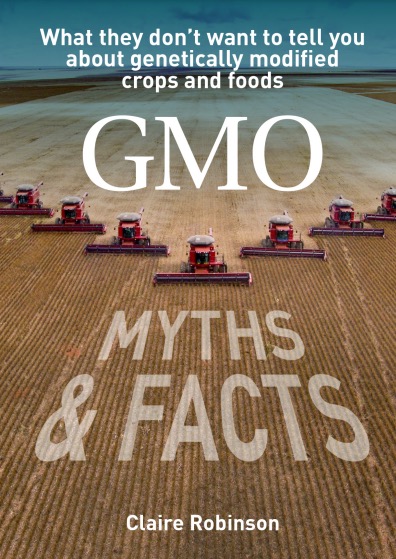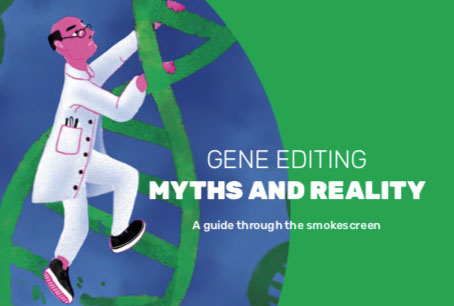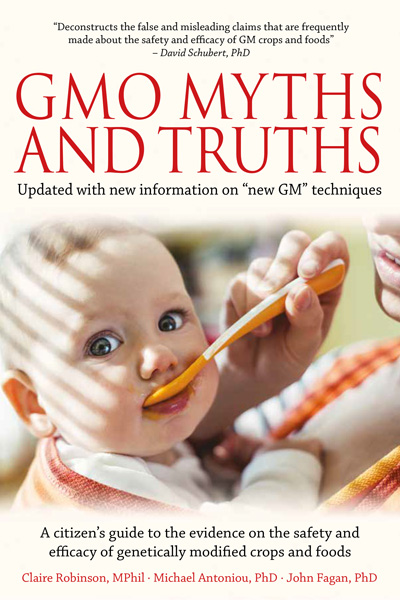
Glyphosate-resistant weeds are main driver for this development. Report: Claire Robinson
Bayer has applied for approval in the EU of its new herbicide, icafolin, following applications in Brazil, the US, and Canada.
The company states that glyphosate resistant weeds – which have thrived with the heavy use of glyphosate, particularly on Roundup Ready crops – were the driver for this development. It touts the new herbicide as a solution to that problem.
A major advantage for Bayer in replacing or reducing glyphosate sales is that it gives the company a possible escape route from the thousands of lawsuits alleging that glyphosate-based herbicides like Roundup caused their cancer.
While hundreds of studies attest to the toxic effects of glyphosate herbicide and the International Agency for Research on Cancer classifies it as a probable carcinogen, icafolin is new, so there’s little to no information available on its possible toxicity to humans or the environment.
In the long tradition of pesticide peddling, it will take many years for scientists to build up knowledge of any toxic effects, during which time Bayer will have profited from selling it. And as glyphosate and other dangerous pesticides are still on the market many years after their toxicity was first widely recognised, even if icafolin is found to be harmful, a ban is likely to take many years in coming.
Bayer doesn’t know how icafolin works
A scientific article published by Bayer scientists makes the remarkable admission that even they don’t understand how the herbicide works to kill plants (“Biochemical and genetic evidence is provided that icafolin-methyl and icafolin inhibit plant tubulin polymerization probably by binding to ß-tubulins” – my emphasis).
So why would we take the risk of allowing yet another agrochemical to be sprayed on our food, particularly one whose toxicity appears to be poorly understood? Bayer’s article appeals to the belief that without herbicides, we’d starve: “Without controlling weeds, it is estimated that about one third of global crop yields would be lost.” Yet studies have found that there is no relationship between herbicide use and crop yields and that reducing herbicide use doesn’t cause yield loss provided other weed management systems are in place.
GM, including gene-edited, icafolin-tolerant plants in the pipeline
Predictably, in parallel with the launch of icafolin, Bayer is developing GM plants that can survive being sprayed with the herbicide. In 2024 Bayer-Monsanto applied for a patent on GM icafolin-tolerant plants. It covers maize, soy, cotton and other commodity crops, but also fruits and vegetables. It also covers plants obtained by GM gene-editing techniques like CRISPR, as well as older-style transgenic GM techniques.
EU proposed deregulation
How do these developments relate to the proposed EU deregulation of “new GMOs” produced by techniques such as gene editing? While the Council of the EU doesn’t want to allow “new GM” herbicide-tolerant plants into the proposed Category 1, which are likely to be exempted from risk assessment, traceability and labelling, they would fit into Category 2 NGTs, which would qualify for reduced risk assessment even if traceability and labelling are preserved (uncertain at present, as negotiations continue).
The developments with icafolin should act as a wakeup call to those EU policymakers who choose to believe claims from the GMO industry and some scientists that deregulating new GMOs will reduce pesticide use. There is no reason why GMO seed companies, whose profits are derived primarily from sales of pesticides, would voluntarily put at risk their main source of revenue.
Until now GM herbicide-tolerant crops have been excluded from the EU, due to lack of support from Member States. But in those parts of the world where they have been planted, they have triggered an explosion in herbicide use. The Bayer patent is yet another confirmation that these companies are already preparing herbicide-tolerant gene-edited crops, with which they will be able to take full advantage of any reductions in EU regulation.
Image: Shutterstock (licensed purchase)










